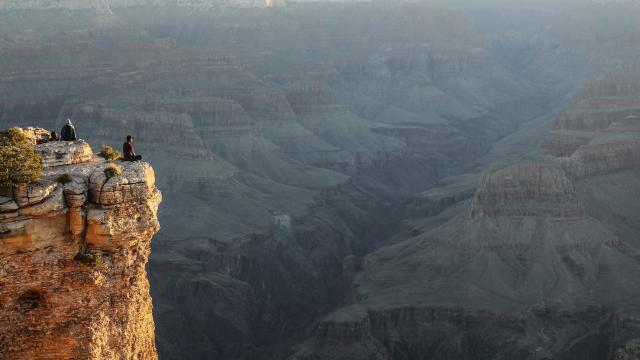Microplastics are taking over the world. A new study found that microplastics are present in at least 11 remote and protected areas in the western U.S.
Published in Science on Thursday, the study uses plastic collected at 11 protected areas as well as a weather model to see how wind and rain carry microscopic plastic to across the West. The study authors zoomed in on how much plastic ends up on public lands, such as the Grand Canyon National Park and Rocky Mountain National Park. They concluded that the atmosphere delivers more than 1,000 tons of microplastic to these and other federal lands each year. That’s equivalent to some 200 million plastic water bottles.
The team was looking at microplastics, which is broken-down pieces from larger pieces of plastic that’s left after sunlight or water has worn them down as well as synthetic fibres like polyesther. Because they’re lightweight, they tend to travel easily. No particle found in 11 parks and protected areas was larger than 0.1 inches (3 millimetres). About 70% of the plastic particles were small enough for winds to loft them around the globe. However, most of the microfiber samples collected were relatively larger and likely travelled between six and 998 km.
What makes the study stand out from previous research on this topic — which had found that atmospheric processes can deposit microplastics into the Arctic or atop mountains — is that this team examined the influence of rain versus wind. The findings suggest that microplastics deposited through rain and wind have different origins.
At sites where the plastics travelled via rainstorms, the particles appear connected to population centres because the samples contained larger bits of microplastic and fewer overall. The authors found the opposite was true for dry-tranported plastics, suggesting that winds may be more connected to large-scale global dispersion. In fact, dry conditions made up more than 75 per cent of the plastic deposited.
“This is a really important and well-done study,” Susanne Brander, an ecotoxicologist at Oregon State University who was not involved in the research, told Gizmodo in an email. “I’m not surprised that microplastics are being found in rain and air in pristine isolated areas and national parks in the U.S.”
The particles came from different sources of plastic, too. Most, however, came from clothing: cotton, polyester, nylon, and even polyolefin, which is largely used in household and vehicle carpeting. The authors suggest that some of these fibres may come from people taking hikes or camping in national parks. Even those of us careful to take all our trash with us may be leaving behind plastic in another form.
Gaël Le Roux, the director of research at the National Polytechnic Institute of Toulouse’s EcoLab who was not involved in this study, told Gizmodo in an email that it was surprising how “relatively homogeneous” the spread of microplastic was across the West.
We know marine wildlife can suffer internal injury and reduced energy if they eat these plastics. As for terrestrial wildlife, there are a lot of research questions.
“The impact of microplastics is still unknown in mountain areas and more generally on land surfaces,” Le Roux said. “They can degrade into nanoplastics and be integrated into living organisms more easily. They can also release toxic organic compounds, as well as heavy metals, for example. Finally, in ecosystems relatively untouched by human impact, they add particles and carbon. Potentially they can offer new ecological niches for the microbial population, e.g. in mountain soils and mountain streams.”
Brander said this study may potentially be an underestimate because the researchers didn’t include nanoplastics, which are even smaller than microplastics. Clear or white particles of microplastics aren’t included in the analysis because they can be hard to see with the technique used here to identify the plastics as well. The authors also suggest in the paper that their estimates may be “conservative.”
What is pretty clear, however, is that these particles accumulate in the atmosphere over time. Plastic waste produced in urban centres doesn’t stay there. This area needs a lot more research, especially across the vast landscapes of the West. What this study says about our national parks is one piece of the story. The full picture may be a lot more troubling.
Update: 6/12/2020, 4:10 a,m. AEST: This post has been updated to clarify that the analysis doesn’t include clear and white microplastics.
